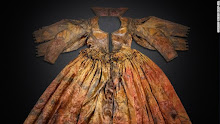In my long-in-progress book, The Spiritual Mission of a Princess: Diana and the Return of the Heart, I often reference an anthology published months after Princess Diana's death...When A Princess Dies: Reflections from Jungian Analysts. In my chapter, "The Sight of Stars," I quote Renos Papadopoulos about distinctions of stars in the heavens and celebrities who have a 'star quality':
Stars are self-sufficient and independent entities in so far as they shine from within and do not follow anybody else's orbit. It must have been these attributes of stars, in addition to their distant, mysterious and magic qualities, that have prompted people to describe certain celebrities as 'stars'.
Enjoy an excerpt of "The Sight of Stars" chapter....
.........................
HEART STAR
She was a 'flawed' star and this brought her
closer to the people, who loved the idea
that a star could also be so near to them.
-Renos K. Papadopoulos,
When A Princess Dies:
Reflections from Jungian Analysts
“The etymology of
the English word ‘star’ comes from a very old root with similar words in most
ancient languages,” wrote Renos K. Papadopoulos in When a Princess Dies.
However, the Greek version of the word, aster, “reveals an interesting
twist.” It is related to the word teirea that translates to “‘the
heavenly constellations, signs’…and to teras which is ‘a sign, wonder,
marvel, of any appearance or event, in which men believed that they could see
the finger of God, and read the future,’” Papadopoulos continued; “hence, teras
also refers to ‘anything that serves as a divine sign or omen.’” Many viewed such
‘star signs’ and ‘divine omens’ in the life and death of Princess Diana.

Oprah Winfrey
wrote eloquently about how we are all precious human beings “given an almighty
gift,” destined to live a life we love. And she also acknowledges there are
those who shine a bit more brilliantly. “Then along comes an anointed one, who
given the chance shines as brightly as the pole star. These are the shining
ones who lead the way, and Diana was such a one!” Divinely touched, yet
poignantly human.
 |
| photo by Mario Testino |
The star-lit words
used to describe Princess Diana in life and death: luminous, radiant, inner
light, shining from within, incandescent—whether used literally or
metaphorically—also suggested something of a spiritual nature. Just as such
words also point to that person’s life being a guidepost of sorts, a sign, a
message to pay attention, changes ahead. And for Diana, her message was through
the heart, she was signaling the world that it was time for change. It was time
for a return to love…and she was indeed shining a light to guide the way.

 |
Diana greeting and shaking
hands with AIDS patient. |
Yet the other side
of the meaning of teiro, Papadopoulos explained, is also a reference to
“healing and rubbing away the effects of pain and anguish. In other words, in
addition to their external twinkling grandeur, stars could be the agents of
both distress and healing.” Clearly with Diana, healing was part of her
spiritual mission in life and death. In life, she demonstrated the nature of
loving touch and attention; when her death cracked open hearts around the world,
a deep cleansing began in the soul of humanity. Diana’s “radiating shine,” as
Papadopoulos defined it, spread far and wide, “affecting the widest possible
variety of people”…no one was left out. And twenty or so years after her death,
Diana’s sons, left traumatized and suffering as boys, found their way, through
love, especially the loving support of their wives, to healing their own mental
and emotional anguish—and courageously shared about their experiences as a
healing gesture to help others find their way to wholeness, and to love. 






















